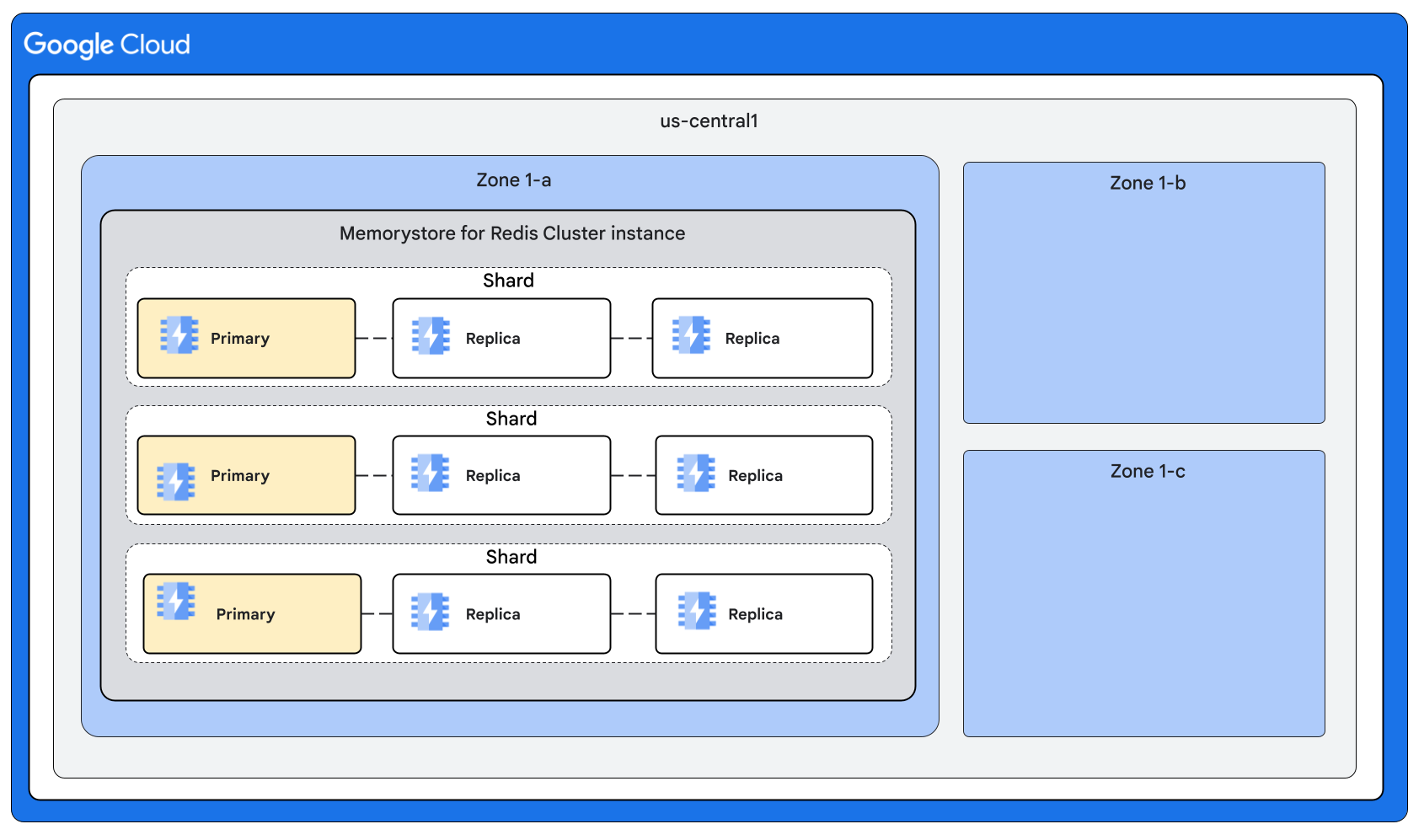This page gives an overview of single-zone instances for Memorystore for Redis Cluster.
For instructions on provisioning a single-zone instance see Create a single-zone instance.
By default, Memorystore for Redis Cluster distributes an instance's nodes evenly among available zones. For diagrams that show how nodes are distributed with this setup, see High availability and replicas.
Alternatively, you can choose to create a single-zone instance. Single-zone instances have lower latency than multi-zone instances because you can place your clients in the same zone as the Redis nodes and avoid cross-zone communication.
You choose the zone distribution mode (single-zone or multi-zone) during instance creation. After it's created, the zone distribution mode can't be changed.
When choosing between a multi-zone instance and a single-zone instance, you should consider your application's tolerance for downtime or data loss if an unexpected zonal outage occurs.
If an unexpected outage impacts the zone where your single-zone instance located, you can lose connectivity to all the nodes in the instance and experience data loss if either persistence or high-availability is not enabled. Alternatively, if an unexpected outage impacts one of the zones of a multi-zone instance, only a portion of the nodes may become unavailable.
If you connect to a single-zone instance from a client in the same zone, then you aren't charged for Consumer Data Processing. For more information, see Network pricing.
Although we recommend provisioning a multi-zone instance with High Availability, you should use the following recommendations for single-zone instances if they apply to you:
If you you choose to provision a single-zone instance, you should enable replicas. Replicas reduce shard hotspots and make shards more resilient against single-node failures.
If you choose to provision an instance without replicas, you should still use a single-zone instance. For more information, see Choose a single-zone instance if your instance doesn't use replicas.
Single-zone instance diagram example

